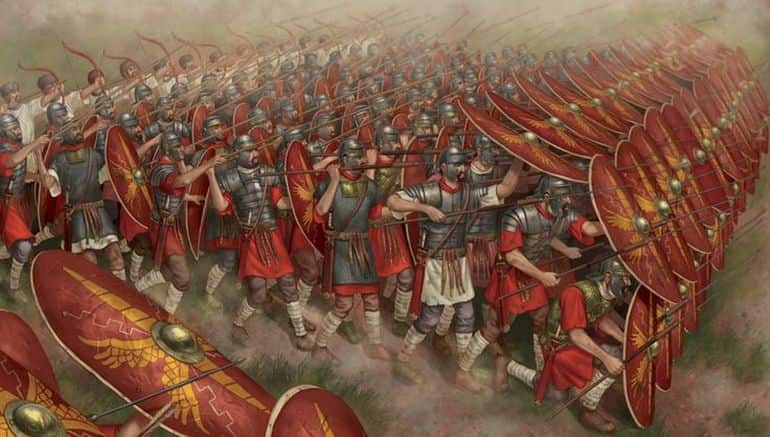Title:
Battle Tactics Of The Imperial Army Of Rome
Word Count:
632
Summary:
Battles were fought in much the same way as in the Pre-Marius times, with the exception of the heavier use of artillery. Often before heavy infantry were sent in, a barrage of missile fire from Onagers and Ballistas (ancient artillery) were used to weaken and dishearten the enemy. As the legionnaires approached the enemy and came within thirty yards or so, they would throw a volley or two of pilum that would weaken the enemy before they engaged in hand-to-hand combat. The sin…
Keywords:
Article Body:
Battles were fought in much the same way as in the Pre-Marius times, with the exception of the heavier use of artillery. Often before heavy infantry were sent in, a barrage of missile fire from Onagers and Ballistas (ancient artillery) were used to weaken and dishearten the enemy. As the legionnaires approached the enemy and came within thirty yards or so, they would throw a volley or two of pilum that would weaken the enemy before they engaged in hand-to-hand combat. The single lines were replaced with a three to five men line, so that the soldiers could easily rotate to replace fallen or fatigued comrades.
With improved training and uniform gear, there were, however, new formations the cohorts could transform into to meet a new situation. These were prime examples that exemplified the ingenuity and effectiveness of Roman warfare. First and probably the most famous, was the Tortoise, or Testudo. When deployed effectively, the soldiers would raise and interlock their large Scutum rectangular shields so that the entire company became a square box almost completely invulnerable to missle fire and objects dropped from above.
The Wedge was also a very important tactic used by the Romans. Small or large groups of Legionnaires could form a triangle, and then use the point to break and open a hole in the enemy’s lines. Troops inside the triangle would also help reinforce and effectively create a solid “spear point” to breach the enemy. It was very important in battles to be able to disrupt and break enemy formations, for it could very well be the difference between victory and defeat.
A skirmishing formation was also used. The normally tight lines of men would space and stagger themselves to effectively increase the apparent size of the unit. This tactic was very useful when they need to make quick attacks and retreats, or when marching over rough terrain. It also let friendly troops fall back easily through the lines if needed.
The repel cavalry stance was extremely effective and devastating to enemy cavalry. This only required two lines of men. The first line would kneel down and tightly interlock their shields to form an impenetrable wall with their pilum pointing up at about a forty-five degree angle. The line of men behind them placed their shields on top of the first lines’ at a slight slant. They would have their pilum ready to throw at the approaching cavalry. This was very effective as horsed do not willingly charge into a solid wall of shields and spear points. Instead, the horse would probably come to a halt before the line, leaving the legionnaires free to throw their pilum and massacre the enemy.
The last tactical arrangement was called the Orb, and was used as a last stance defensive formation. If any number of soldiers was separated from the rest of the army, or else they became surrounded by the enemy, they would form a tight circle with officers and archers in the center and legionnaires on the outside. This required a highly trained and disciplined army at the individual level, as this was formation often took place with a small group of soldiers during the heat of battle.
The Imperial legions of the Roman Empire represented the technological height of the army. By this time the army had fine-tuned their tactics, formations, and equipment and gear to create an unstoppable war machine. As the army gained momentum, employing a new recruitment method and furthering its power on the battle field and on society, the Roman Empire stopped its expansion and focused on defending its borders. By the end of the third century A.D., Rome’s military power had past its height, and had started to decline and struggle against the ceaseless attacks along its borders.


